>
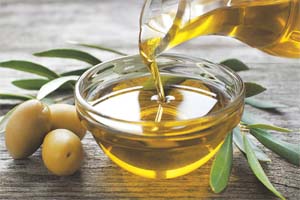
Abolition of customs duty on crude oil, HSD imports likely
Amid rising oil prices, the government is expected to abolish customs duty on crude oil and high-speed diesel (HSD) imports to contain inflationary pressures. Finance and petroleum ministries, the Oil and Gas Regulatory Authority (Ogra), the Federal Board of Revenue (FBR), oil refineries and oil marketing companies were examining the proposal. Customs duty is the only tax left on the petroleum sector after the government gradually abolished sales tax and petroleum levy. The matter would be taken up by the upcoming meeting of the cabinet’s Economic Coordination Committee (ECC). At present, customs duty applies to the import of crude oil and all petroleum products, including diesel and petrol, at the rate of 10 per cent. Interestingly, customs duty on the import of petroleum products from China is zero under the free trade agreement with the country, and therefore oil companies tend to arrange their imports from there.
|
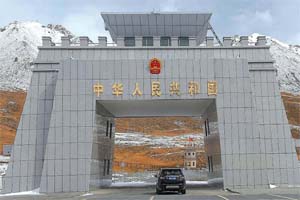
Closed since 2019, Khunjerab to reopen for trade from 1st
After remaining closed for more than two and a half years, a key land border crossing between Pakistan and China at Khunjerab is being reopened for trade activities from April 1. Khunjerab Pass was closed in November 2019 to contain the transmission of the coronavirus between the two countries. The pass was temporarily opened in July and September 2020 and again in November 2021, only to facilitate the transportation of the containers loaded with goods that had been stranded in China. During the temporary opening of the border, stranded containers from China were unloaded at Khunjerab Top instead of the port at Sost.
|
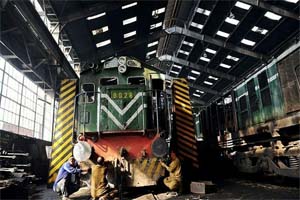
ML-I upgradation is of great significance to Pakistan
On March 17, China and Pakistan agreed to execute the mega ML-1 railway up-gradation project under the framework of China-Pakistan Economic Corridor (CPEC) on a priority basis. This is a major development and also the implementation of the important consensus of Prime Minister Imran Khan’s meeting with Chinese top leaders during his recent visit to China. The agreement was reached at an online meeting between the CPEC Authority of Pakistan and the National Development and Reforms Commission (NDRC) of China. The relevant departments of the two countries are now fully geared to take the necessary steps to transform the understandings reached at the highest level into actions on the ground at the earliest. The Chinese side attaches the utmost importance to the ML-1 railway up-gradation project. The National Railway Administration (NRA) and other relevant institutions of China are now working closely with corresponding Pakistani departments such as Pakistan Railways to work out further details of the up-gradation project. ML-1 railway runs from Karachi to Peshawar through Lahore and Islamabad, with a total length of 1,726 kilometers. It is the most important south-north trunk railway in Pakistan.
|
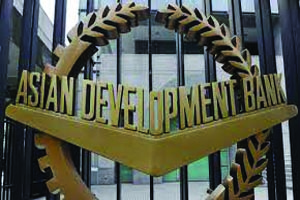
ADB asks Pakistan to boost savings, investments
Pakistan’s economy remains vulnerable despite a stable debt outlook as investment rates have remained very low at 15.2 per cent of GDP in the last fiscal year, says the Asian Development Bank. The under-developed capital markets in Pakistan have contributed to the ineffective mobilisation of savings, leading to a wide saving-investment gap. The banks’ own credit origination capacity was hampered by the ineffective role of the country’s capital markets, and the economy remained dependent on volatile foreign capital. The development of domestic capital markets can have the benefit of increasing the government’s access to local currency financing by issuing debt through domestic open-market operations and thereby help manage foreign exchange risk and inflation better. An ADB internal report connected with the approval of a $300 million loan on March 22 to further develop Pakistan’s capital markets, promote private investment and help to mobilise domestic resources to finance sustainable growth, says Pakistan significantly below peer countries on key capital market-related indicators. At 15.2pc of GDP, Pakistan’s investment rate in the fiscal year 2021 is almost half of the South Asian average of 31pc of GDP. For an economy at Pakistan’s development stage, this low level of capital investment reflects low investor and business confidence and also constraints future growth.
|
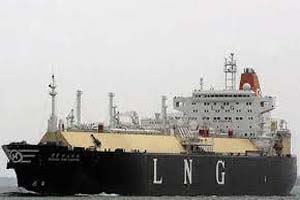
Pakistan in talks with Russia for LNG imports
As Russia develops the Yamal LNG project facility -- Islamabad and Moscow are in talks to a multi-billion dollar government-to-government import deal. This is a new addition to the energy cooperation between Pakistan and Russia as two countries are already working on different projects including the Pakistan Gas Stream, a gas pipeline from Kazakhstan and an offshore gas pipeline. Sources said the Pakistani government was interested to sign a government-to-government deal with Russia to import LNG to meet its growing gas demand. Pakistan was currently importing LNG from Qatar and wanted to apply this as a benchmark price for other countries including Russia. They said the benchmark price set by Pakistan might cause hurdles in implementing the LNG deal with Russia. Moreover, the prices of LNG had globally witnessed a sharp increase. Secondly, the Russia is too far away and Pakistan might face higher freight charges in comparison with LNG cargoes coming from Qatar. However, Russia might have the option to follow LNG cargo swap with other companies operating close to Pakistan that could result in cutting the freight charges. Pakistan meets around 24% of its gas demand through LNG imports.
|
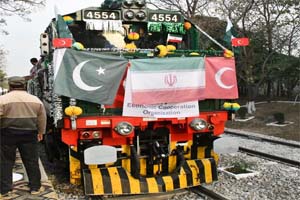
Fourth ITI train departs for Turkey
The fourth Islamabad-Tehran-Istanbul (ITI) freight train carrying various high-value products in six containers has departed from Pakistan for Turkey. On the other hand, nine trains carrying rice have reached to Iran via Taftan so far since the resumption of the international freight train operation on December 21 last year. the goods being exported to Turkey from Pakistan via ITI rail network, the products included a huge quantity of pink salt which is not only used in Turkey but also in other European countries. The first ITI train had reached Turkey in first week of January followed by another that reached the final destination in last week of the same month. Under an arrangement, before reaching destination, the goods loaded on the train are supposed to be shifted to other wagons compatible with the Iranian and Turkish rail/gauge system.
|
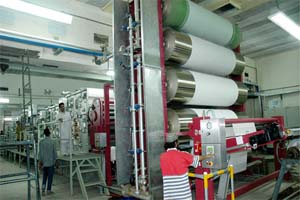
Textile exports jump 26pc to $12.6bn in first eight months of FY22
Textile and clothing exports grew 26.08 per cent year-on-year to $12.60 billion in the first eight months of this fiscal year (8MFY22), mainly on the back of a massive depreciation in the rupee’s value and a steady rise in global demand. Data released by the Pakistan Bureau of Statistics shows that in February the textile and clothing exports grew 35.72pc year-on-year. The government has recently announced the much-awaited textile and apparel policy pending for the last few years. Several measures are announced which are expected to jack up exports from the country. In the budget 2021-22, the government drastically reduced duty and taxes on the imports of several hundred raw materials to bring down the input cost of exportable products. Liquidity issues were also resolved to a considerable extent by a timely release of refunds and the payment of cash subsidies.
|
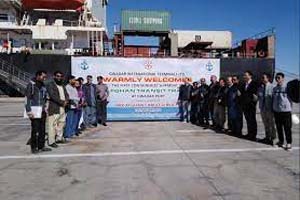
Gwadar Port to be utilised for Afghan transit trade
The Pak-Afghan Chamber of Commerce & Industry (PACCI) and Gwadar Chamber of Commerce & Industry (GCCI) agreed to utilise Gwadar Port for Afghan transit trade. The chambers also agreed to take measures for boosting bilateral trade. A delegation of PACCI and Karachi business community led by the chamber’s President Javed Barwani and Zubair Motiwala visited Gwadar. GCCI President Nagman Abdul and former president of the chamber Naveed Kalmati were also present in the meeting. In a meeting held at the office of Gwadar Development Authority (GDA) briefed the delegates about the utilisation of Gwadar Port and the China Pakistan Economic Corridor (CPEC). The business leaders expressed their interest in promoting trade via Gwadar Port. The meeting agreed that in the coming days PACCI, importers and exporters from the two countries and Afghan transit trade would utilise Gwadar Port. It was decided that steps in this regard would be taken in consultation with the concerned authorities so that Gwadar Port becomes a trade and economic hub between Pakistan and Afghanistan. In April 2020, as the Covid-19 pandemic spread, Pakistan had allowed import of bulk shipments of food items through Gwadar port for transit to Afghanistan to help Kabul maintain food supply.
|
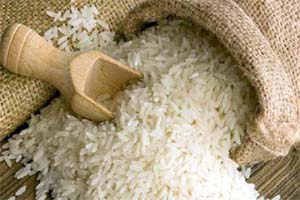
Kazakhstan eager to import rice
Kazakhstan is interested in importing rice directly from Pakistan, said the Central Asian Republic Ambassador Yerzhan Kistafin. In a meeting with Federal Minister for National Food Security and Research Syed Fakhar Imam, the Kazakhstan envoy said that his country was buying the commodity from Russia. He pointed out that Kazakhstan was hosting a trade summit exclusively for Pakistan in Almaty in May 2022 to give Pakistani companies an opportunity to showcase their products before the Kazakh business community. “Over 60 Pakistani companies from various sectors of the economy will participate in the exhibition,” he said, adding that the firms specialising in agricultural machinery, agricultural products, sports goods, surgical instruments, handicrafts and confectionery would display their products. He expressed keen interest in enhancing bilateral ties with Pakistan and recalled that during the 10th session of Intergovernmental Commission on Trade, Economic, Scientific, Technical and Cultural Cooperation between Kazakhstan and Pakistan, both nations agreed to increase the turnover of agricultural products. The meeting took place in November 2021.
|
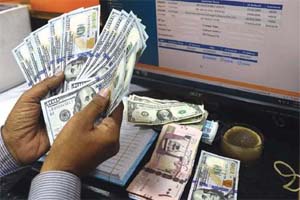
Foreign investment slides 33pc in February
Foreign direct investment (FDI) fell year-on-year (YoY) by 33 per cent and declined by 17.3pc compared to preceding month of January, data released by the State Bank of Pakistan showed. According to the SBP data, FDI inflows during July-Feb 2021-22 (8MFY22) noted a positive growth of 6pc compared to the same period of last fiscal year. The second half of the current fiscal has been facing several negative impacts including the war in Ukraine and a hike in oil prices in the international markets. The record increase in oil prices as well as in other commodities rates has widened the trade deficit. The 6pc FDI growth is far lower than the $11.6 billion current account deficit confronting the country. Poor investment climate hit the FDI inflows which noted a sharp decline of 50pc to $110 million in January this year from $218.7m in December 2021. Real change was noted in January since the first half of the current fiscal year (1HFY22) witnessed a growth of 20pc in FDI. The inflow in December 2021 was much higher at $218.7m – showing a jump of 29pc – compared to $169.4m in December 2020. The declining trend of last two months could eliminate the positive growth trend of 20pc growth during 1HFY22.
|
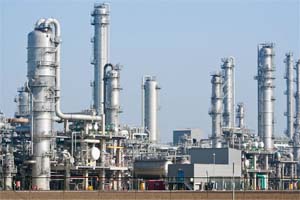
Govt to encourage investment in petrochemical sector
The government promised on Mar 17 to soon provide incentives to refineries to encourage investments in the petrochemical sector. Speaking at a petrochemical symposium, Prime Minister’s Adviser on Commerce said Pakistan should not always rely on the textile sector but find new areas for diversification. “Petrochemical and steel sectors are the mother of all industries. We have to structure tariff, duties and taxes for setting up a progressive and successful petrochemical industry,” he said. Board of Investment (BOI) Chairman said the petroleum policy was in its final stages. “Implementation of this policy will bring an investment of $3 billion in the near future,” he said, adding that only by setting up the naphtha cracker plants, Pakistan could achieve import substitution to the tune of $800 million and create 50,000 direct and indirect jobs.
|
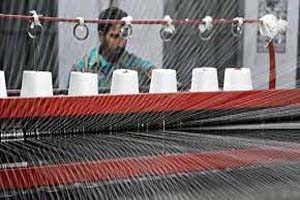
Big industries expand 7.6% in Jul-Jan
Large industries of Pakistan posted 7.6% growth in the first seven months of current fiscal year on the back of increase in output of almost all major industries after the downward growth paused for the first time in five months. The pace of growth in large-scale manufacturing (LSM) industries increased to 7.6% during July-January of fiscal year 2021-22, the Pakistan Bureau of Statistics (PBS) reported on March 18, Friday. It was the second growth figure released by the PBS under the new base year of 2015-16. The new base covers additional industries and their products compared to the old base of 2005-06. On the basis of old methodology, the LSM growth rate stood at 3.9% in the first seven months of current fiscal year. In January, the downward trend paused for the first time in five months. The year-on-year LSM growth increased 8.2% in January over the same month a year ago. Since large industries contribute heavily to revenue collection and job creation, any change in their growth impacts the government and business sentiment accordingly.
|
|

© 2022 Alpine Marine Services Private Limited
all rights reserved
|
|
|